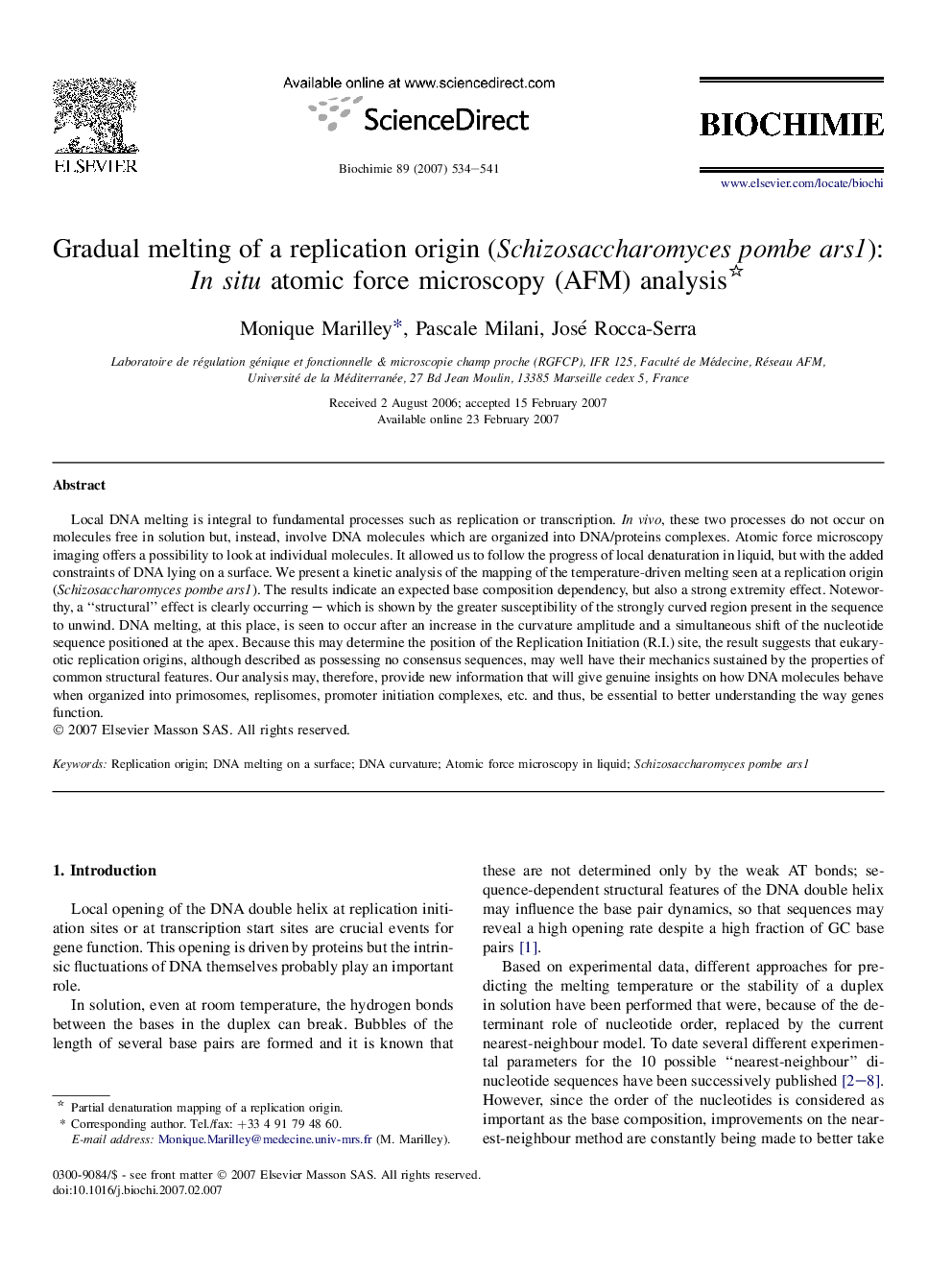| Article ID | Journal | Published Year | Pages | File Type |
|---|---|---|---|---|
| 1953425 | Biochimie | 2007 | 8 Pages |
Local DNA melting is integral to fundamental processes such as replication or transcription. In vivo, these two processes do not occur on molecules free in solution but, instead, involve DNA molecules which are organized into DNA/proteins complexes. Atomic force microscopy imaging offers a possibility to look at individual molecules. It allowed us to follow the progress of local denaturation in liquid, but with the added constraints of DNA lying on a surface. We present a kinetic analysis of the mapping of the temperature-driven melting seen at a replication origin (Schizosaccharomyces pombe ars1). The results indicate an expected base composition dependency, but also a strong extremity effect. Noteworthy, a “structural” effect is clearly occurring – which is shown by the greater susceptibility of the strongly curved region present in the sequence to unwind. DNA melting, at this place, is seen to occur after an increase in the curvature amplitude and a simultaneous shift of the nucleotide sequence positioned at the apex. Because this may determine the position of the Replication Initiation (R.I.) site, the result suggests that eukaryotic replication origins, although described as possessing no consensus sequences, may well have their mechanics sustained by the properties of common structural features. Our analysis may, therefore, provide new information that will give genuine insights on how DNA molecules behave when organized into primosomes, replisomes, promoter initiation complexes, etc. and thus, be essential to better understanding the way genes function.
